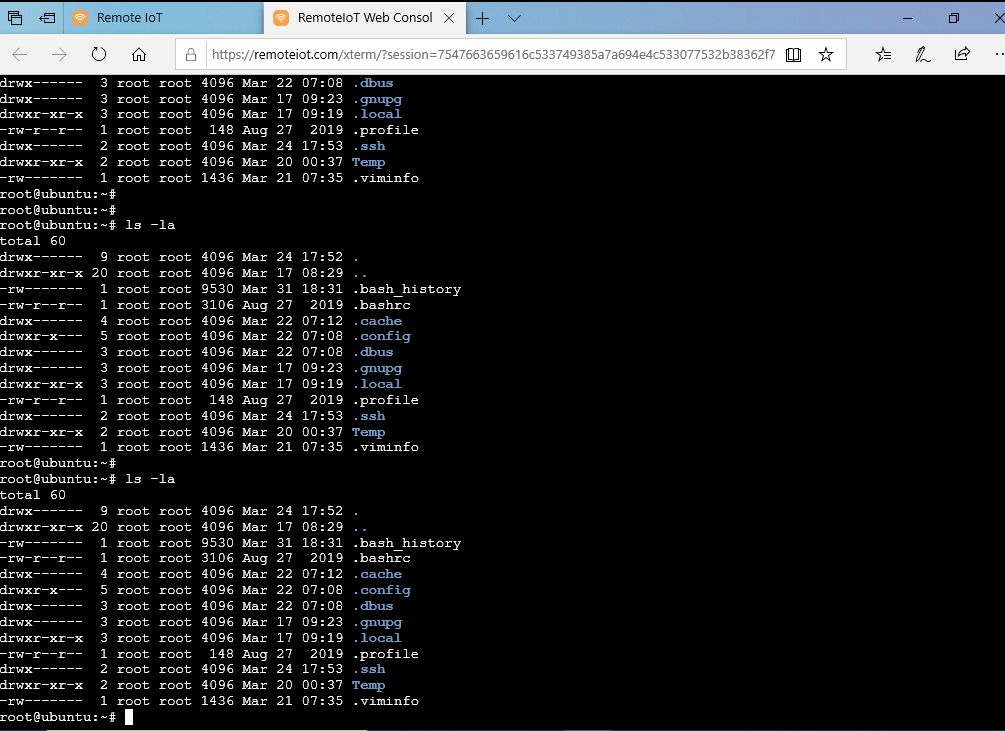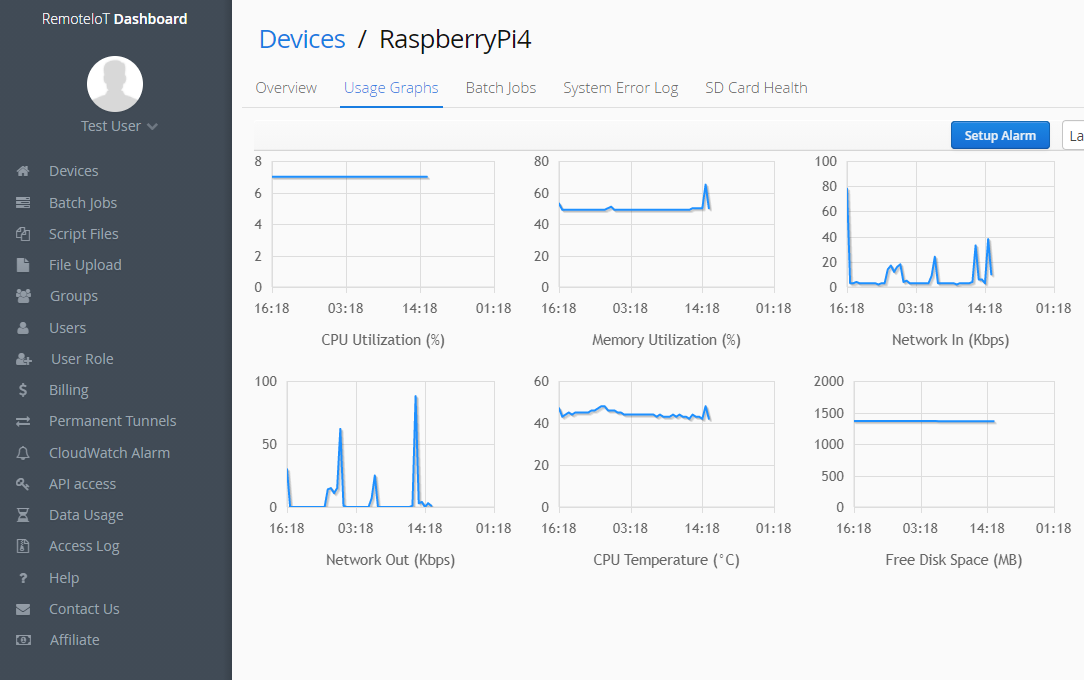
Utilizing any small computer away tends to be exceptionally beneficial, but the task moreover brings hidden preservation dangers. To mitigate existing threats, enforcing suitable network shields and studying how Network Address Translation (NAT) works is critical. A firewall acts as a shield between one's Pi and the outside world, giving you to manage incoming and outgoing traffic based on designated rules. By adjusting your firewall to only approve trusted connections, you can significantly enhance the security of your device.
network translators are another essential element in remote access security. They provide private IP addresses to devices within your network and present a single public IP address to the outside world. This approach helps to hide the internal network structure, making it less likely for attackers to hit individual devices. By leveraging both firewalls and NAT routers, you can create a secure and robust remote access solution for your Raspberry Pi.
Interacting with IoT Devices from Remote Places the Firewall
The domain of Internet of Things (IoT) offers remarkable opportunities for coordination, but it also leads to unique problems. One key problem is securely utilizing these devices from external locations. Traditional firewalls, designed to protect systems from external threats, often prevent access to IoT endpoints, hindering the full potential of connected gadgets. To handle this barrier, innovative approaches are emerging.
- Remote platforms allow for confidential access to IoT devices, enabling users to observe them from anywhere with an internet access.
- Shielded Access systems create a restricted tunnel between the user's device and the IoT network, safeguarding data during sending.
- Zero-Trust protocols enforce strict access controls, substantiating the identity of users before granting them access to specific devices.
By embracing these practices, organizations can tap into the full benefits of IoT while ensuring the privacy of their valuable data and platform.
Narrowing the Divide: Accessing to Raspberry Pis Behind Network Address Translation (NAT)
Network Address Translation (NAT) can sometimes pose a hurdle when trying to link to your Raspberry Pi from outside your local network. While NAT effectively masks private IP addresses, it can make direct connections difficult. Fortunately, there are several solutions to bridge this gap and enable seamless remote access to your Raspberry Pis.
- One common approach is to utilize a Dynamic DNS service, which provides a constant hostname for your Pi that updates automatically even when its IP address changes.
- Another option is to set up port forwarding on your router, allowing specific ports on your Raspberry Pi to be allocated to public IP addresses. This method requires careful configuration and understanding of network protocols.
- For more secure access, consider implementing a VPN (Virtual Private Network). A VPN encrypts your connection and routes it through a trusted server, masking your real IP address and providing an extra layer of protection.
By exploring these strategies and selecting the most appropriate solution for your needs, you can effectively bridge the gap created by NAT and gain reliable remote access to your Raspberry Pis, unlocking their full potential from anywhere with an internet connection.
Accessing IoT Devices Securely Behind Firewalls
Remote access toward IoT devices frequently be a challenge when facing firewalls. These security measures formulated to protect your network can sometimes impede your ability to control your connected devices from afar. However, mastering the principles behind firewall operation and implementing specific configurations can create a secure pathway for remote supervision.
One established approach is to assemble port forwarding rules. This requires routing specific IP addresses and ports to your IoT device, effectively producing a direct connection. Another method takes advantage of VPNs (Virtual Private Networks). By establishing a secure tunnel between your device and the network where your IoT device resides, you can bypass firewall restrictions and gain access to your devices remotely. It's imperative to remember that implementing these solutions needs a thorough understanding of your network infrastructure and security protocols to copyright the integrity and safety of your system.
- Employ strong passwords for your router and IoT devices.
- Regularly update firmware on your router and IoT devices to resolve security vulnerabilities.
- Cut off any unnecessary services or ports on your router.
Securing Firewalls for Remote Raspberry Pi Management
Remotely controlling your Raspberry Pi is capable of be a powerful way to employ its capabilities. However, firewalls are crucial for maintaining the security of your device. Properly adjusting firewall rules facilitates you to restrict incoming and outgoing network traffic, halting unauthorized interfaces. Understanding how to adjust these settings is critical for guaranteeing the integrity of your Raspberry Pi.
- Leverage a firewall software solution designed for Raspberry Pi. Numerous variants are available, each with its own set of features.
- Create clear rules that lay out which ports should be open and which should remain disabled.
- Examine the use of a VPN for an extra layer of shielding when communicating remotely.
Don't forget that firewall arrangements should be tailored to your specific requirements.
Optimizing Remote Access for IoT Behind Network Address Translation
Effectively handling your Internet of Things (IoT) devices from a remote location presents unique hurdles. NAT (Network Address Translation), commonly used in home and small office networks, can complicate this process. This guide will delve into the essential steps to securely access and set up your IoT devices behind a NAT firewall.
- Initially, establish a secure connection between your remote device and your local network using a reliable VPN protocol like OpenVPN or WireGuard.
- ,Furthermore, configure port forwarding rules on your router to allow incoming communications to the specific ports used by your IoT devices. Ensure you only forward traffic to the required ports and use strong passwords for authentication.
- At last, consider implementing multi-factor authentication (MFA) for added security when accessing your IoT devices remotely. MFA adds an extra layer of protection by requiring multiple forms of verification, such as a password and a unique code sent to your phone.
By embracing these best practices, you can safely and securely handle your IoT devices from anywhere with an internet connection.
Fortifying Remote Access to Your Raspberry Pi
Need to operate your Raspberry Pi from any location? A firewall is essential for safely enabling remote access. It acts as a gatekeeper, blocking unauthorized requests while allowing authorized requests through. By implementing proper firewall configurations, you can ensure your Pi remains secure even when accessed remotely.
Begin by identifying the services you need to expose externally. Samba are common examples. Configure your firewall to authorize inbound sessions on the specific ports used by these services. Remember, a well-configured firewall will only open the necessary doors, decreasing potential vulnerabilities.
- Deploy a robust firewall software package designed for Raspberry Pi, such as UFW or iptables.
- Establish strong passwords for your remote access accounts.
- Systematically review and update your firewall rules to address any changes in your network.
Obtain Remotely to Raspberry Pis Through Firewalls and NAT Routers
Securing your Raspberry Pi within a network environment often involves traversing firewalls and Network Address Translation (NAT) routers. This can seem daunting in the beginning, but understanding these components is crucial for safely connecting to your device from afar. This guide provides an in-depth walkthrough of common strategies for remote access, empowering you to use with your Raspberry Pi effectively regardless of its physical location.
We'll delve into the fundamentals of firewalls and NAT, outlining their roles in network security. Then, we'll explore various approaches for establishing secure connections, including SSH tunneling, VPNs, and port forwarding. In addition, we'll provide practical steps and examples to help you implement these techniques on your own setup.
By mastering the art of remote access, you can unlock a world of possibilities for your Raspberry Pi projects, enabling you to monitor performance, repair issues, and even control your devices remotely.
Fortified Remote Access for Your Raspberry Pi
Hoping to operate your Raspberry Pi from any location? Follow these guidelines to set up secure remote access. First, select a suitable protocol like SSH or VNC. Next, enable the necessary software on your Pi. Establish a strong password and enable two-factor authentication for added security. Then, map the required ports on your router to your Pi's IP address. Finally, test your connection from a remote device.
- preservation difficulties. To lower security threats. To reduce protection difficulties. To reduce security challenges. To curtail
- Leverage firewalls to protect your Raspberry Pi. safeguarding dangers. To minimize security issues. To diminish safety challenges. To diminish safety Remotely access raspberry pi behind firewall or nat router windows challenges. To curtail
- Maintain your software up-to-date to patch vulnerabilities.
- Monitor your system logs for suspicious activity.
From Home Network to the World: Remotely Controlling Your Raspberry Pi Across Firewalls
Your tiny PC can be much more than just a local project. With the right setup, you can control it from anywhere in the world, regardless of firewalls or distance. This opens up a universe of possibilities - managing your home automation, accessing data remotely, or even running remote server services directly from your Pi.
While this may seem daunting at first, setting up remote access for your Raspberry Pi is surprisingly straightforward. You'll need to configure your network settings, set up a secure connection, and choose the right tools for controlling your device remotely. Here are some critical actions to get you started:
* First, ensure your home network is configured properly. This includes setting up port forwarding rules to allow access to your Pi from outside your local network.* Next, choose a secure connection protocol like SSH or VPN. These protocols encrypt your communications and protect your data from interference.* Finally, select a remote control tool that suits your needs. Popular options include VNC for graphical access, SSH clients for text-based interaction, and cloud-based platforms for simplified management.
Once you've taken these steps, you can enjoy the freedom of controlling your Raspberry Pi from anywhere with an internet connection. This opens up a world of possibilities for learning, experimenting, and building cutting-edge projects.
Engaging IoT Devices Beyond the Local Network: Firewalls and NAT
Extending the reach of Internet of Things (IoT) devices external to the confines of your local network requires careful consideration of security mechanisms. Firewalls serve as crucial shields, meticulously scrutinizing incoming and outgoing traffic to block potential threats. Network Address Translation (NAT), on the other hand, allows multiple devices on a private network to share a single public IP address, boosting network efficiency and securing internal locations.
By implementing robust firewall configurations and employing NAT effectively, you can create a secure and coordinated environment for your IoT ecosystem to thrive. This combination of solutions ensures that your devices can securely share with the wider internet while staying protected from malicious actors.
- Arrange comprehensive firewall rules to allow only trusted traffic.
- Use NAT to hide internal device addresses.
- Analyze network activity for any suspicious behavior.
